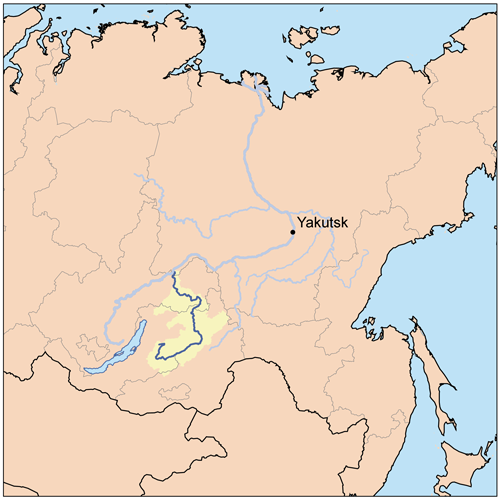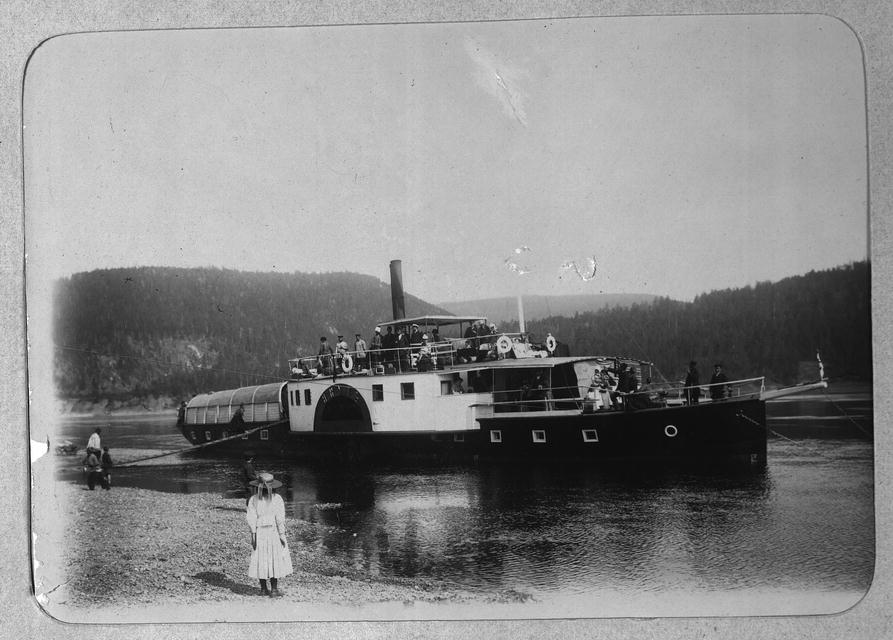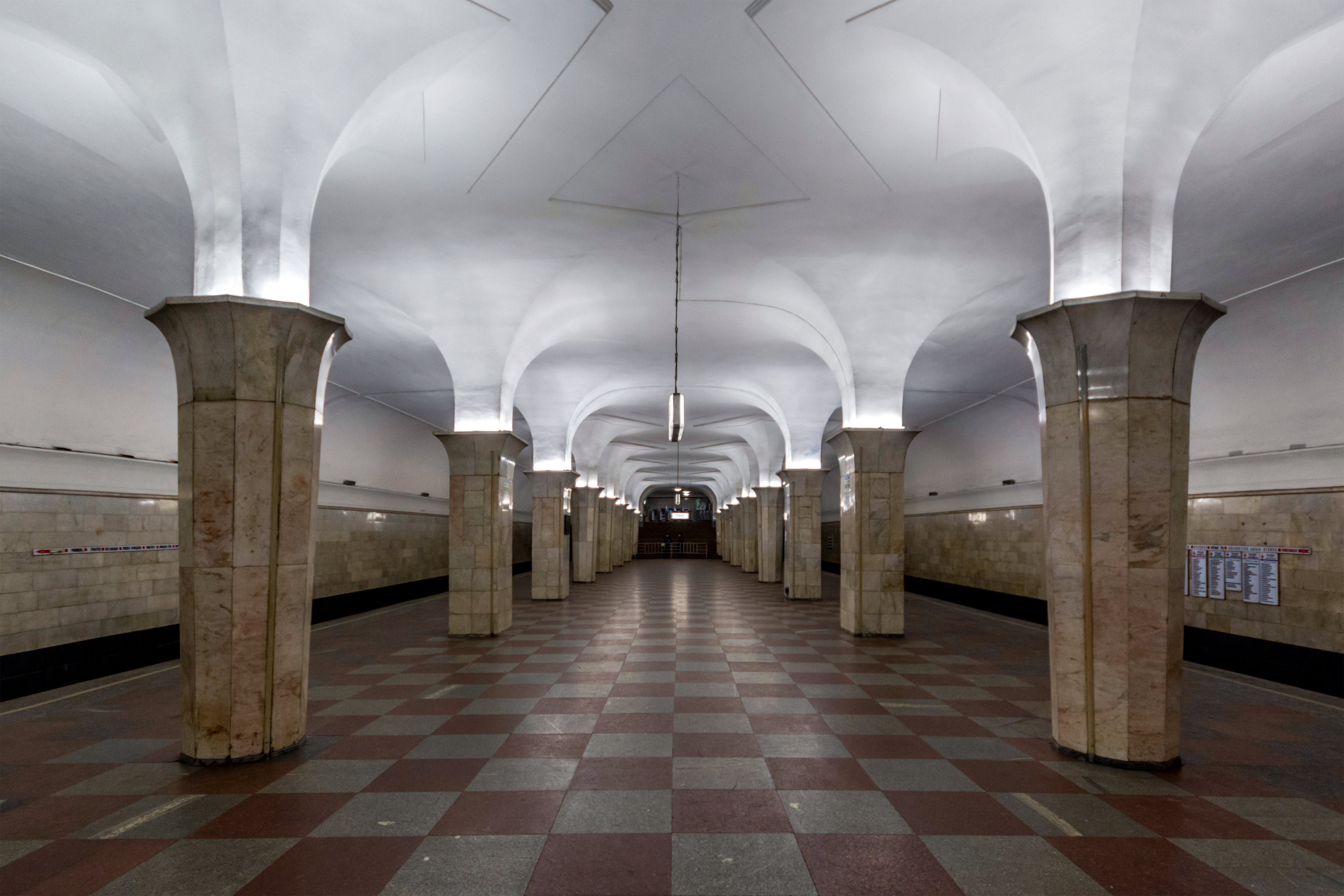|
Patom Highlands
The Patom Highlands () are a mountainous area in Eastern Siberia, Russia. Administratively most of the territory of the uplands is part of Irkutsk Oblast, with a smaller section in northern Zabaykalsky Krai.Google Earth There are large deposits of gold in Bodaybo and Artyomovsky, Irkutsk Oblast, Artyomovsky. Besides these two towns, other inhabited localities of the mountain region are: Mama, Russia, Mama, Perevoz, Bodaybinsky District, Irkutsk Oblast, Perevoz, Kropotkin, Irkutsk Oblast, Kropotkin, Svetly, Bodaybinsky District, Irkutsk Oblast,, Svetly and Bolshoy Patom (village), Bolshoy Patom, Bodaybinsky District. History In 1912 there was a massacre of striking workers of the Lena Goldfields, located in the Patom Highlands between the Lena and Vitim rivers. Strikers were protesting about harsh working conditions. Soldiers of the Imperial Russian Army intervened and fired upon protesters, causing hundreds of casualties. The incident provoked wide outrage across pre-revolutionary ... [...More Info...] [...Related Items...] OR: [Wikipedia] [Google] [Baidu] |
Russia
Russia, or the Russian Federation, is a country spanning Eastern Europe and North Asia. It is the list of countries and dependencies by area, largest country in the world, and extends across Time in Russia, eleven time zones, sharing Borders of Russia, land borders with fourteen countries. Russia is the List of European countries by population, most populous country in Europe and the List of countries and dependencies by population, ninth-most populous country in the world. It is a Urbanization by sovereign state, highly urbanised country, with sixteen of its urban areas having more than 1 million inhabitants. Moscow, the List of metropolitan areas in Europe, most populous metropolitan area in Europe, is the capital and List of cities and towns in Russia by population, largest city of Russia, while Saint Petersburg is its second-largest city and Society and culture in Saint Petersburg, cultural centre. Human settlement on the territory of modern Russia dates back to the ... [...More Info...] [...Related Items...] OR: [Wikipedia] [Google] [Baidu] |
Kropotkin, Irkutsk Oblast
Kropotkin () is an urban locality (a work settlement) in Bodaybinsky District of Irkutsk Oblast, Russia. Population: It was named Kropotkin (in honor of Peter Kropotkin) in 1930. Administrative status Kropotkin is the capital of the Kropotkin Urban Settlement (Кропоткинского муниципального образования) municipal unit, which includes the Kropotkin urban locality, as well as the village of Svetly. Geography It is located on the Patom Highlands, in the Kropotkin Range area, southwest of Perevoz and northeast of the regional center, Bodaibo. The town lies on the Nygri River, a left tributary of the Vachi River, a tributary of the Zhuya of the Chara River basin.Google Earth Google Earth is a web mapping, web and computer program created by Google that renders a 3D computer graphics, 3D representation of Earth based primarily on satellite imagery. The program maps the Earth by superimposition, superimposing satelli ... Referen ... [...More Info...] [...Related Items...] OR: [Wikipedia] [Google] [Baidu] |
North Baikal Highlands
The North Baikal Highlands (; ) '''' in 30 vols. — Ch. ed. . - 3rd ed. - M. Soviet Encyclopedia, 1969-1978.(in Russian) are a mountainous area in , Russia. Administratively the territory of the uplands is part of and |
Stanovoy Highlands
The Stanovoy Highlands () or Stanovoy Uplands is a mountain range in the Transbaikal region of Siberia, Russia. Geography The Stanovoy Highlands are a mountainous area between the Patom Highlands to the north and the Vitim Plateau to the south. To the northeast they border with the Olyokma-Chara Plateau —in the upper reaches of the Chara (river), Chara river. The ranges of the highlands stretch roughly in a WSW / ENE direction between the North Baikal Highlands in the west and the Olyokma River in the east. The latter separates it from the Stanovoy Range in the east. There are large intermontane basins, such as the Muya Depression and the Chara Depression at altitudes ranging between and . Subranges The system of the Stanovoy Highlands comprises a group of subranges, including the following: *Southern Muya Range (Южно-Муйский хребет), highest point Muisky Gigant, *Northern Muya Range (Северо-Муйский хребет), highest point *Kodar Range ( ... [...More Info...] [...Related Items...] OR: [Wikipedia] [Google] [Baidu] |
Lena Plateau
The Lena Plateau, also known as Prilensky Plateau (; ), is one of the great plateaus of Siberia. Administratively it is mostly within the Sakha Republic (Yakutia), with a small sector in the Irkutsk Oblast, Far Eastern Federal District, Russia. The plateau is named after the Lena River, which flows across it.Google Earth Protected areas There are spectacularly eroded rock formations composed of gypsum-bearing and saline limestone, dolomite and, in some places sandstone, in different spots of the plateau. The Lena Pillars, lining the banks of river Lena in the region, are the most well-known of these features. They were declared a UNESCO World Heritage Site in 2012. Other protected areas in the plateau are the Sinyyaya Pillars by river Sinyaya River (Lena), Sinyaya, and the Turuuk Khaya Rocks by the Lyutenge River. The Olyokma Nature Reserve is located on the eastern side, partly within neighboring Aldan Highlands. Geography The Lena Plateau is located in the southern Sakha Republ ... [...More Info...] [...Related Items...] OR: [Wikipedia] [Google] [Baidu] |
Chara River
The Chara (; , ''Çaara'') is a left tributary of the Olyokma in Eastern Siberia, Russia. It is long, and has a drainage basin of . Together with the Olyokma, river Chara gives its name to the Olyokma-Chara Plateau (Олёкмо-Чарское плоскогорье), located to the east of its eastern bank. History The region is famous for a peculiar mountain where charoite has been mined for decades. This intensely purple mineral, named after the river, is only found here and was discovered in the 1940s when a rail tunnel was constructed. Part of the Russian governmental debt was paid in charoite and slabs of this now expensive ornamental material were stored in basements of houses of the Hungarian capital city, Budapest. Course The Chara begins as an outflow of Bolshoye Leprindo lake in the Kodar Mountains, Stanovoy Highlands in northern Zabaykalsky Krai. It flows through the Chara Basin between the Kodar and Kalar Mountains, passing the ''Chara Sands'', a area of activ ... [...More Info...] [...Related Items...] OR: [Wikipedia] [Google] [Baidu] |
Vitim River
The Vitim (; , ; , ; Buryat and , ''Vitim'') is a major tributary of the Lena. Its source is east of Lake Baikal, at the confluence of rivers Vitimkan from the west and China from the east. The Vitim flows first south, bends eastwards and then northward in the Vitim Plateau. Then it flows north through the Stanovoy Highlands and the town of Bodaybo. Including river Vitimkan, its western source, it is long, and has a drainage basin of .Витим (река в Бурят. АССР) It is navigable from the Lena to Bodaybo. Upstream, tugs can haul barges as far as the |
Lena River
The Lena is a river in the Russian Far East and is the easternmost river of the three great rivers of Siberia which flow into the Arctic Ocean, the others being Ob (river), Ob and Yenisey. The Lena River is long and has a capacious drainage basin of ; thus the Lena is the list of rivers by length, eleventh-longest river in the world and the longest river entirely within Russia. Geographically, permafrost underlies all the Lena River's catchment and it is continuous in over 75 percent of the basin. Course The Lena originates at of elevation in the Baikal Mountains, west of Lake Baikal, south of the Central Siberian Plateau. The Lena flows north-east and traverses the Lena-Angara Plateau, then is joined by three tributary rivers: (i) the Kirenga, (ii) the Vitim (river), Vitim, and (iii) the Olyokma. From Yakutsk, the Lena River enters the Central Yakutian Lowland and flows north until joined by the eastern tributary, the Aldan (river), Aldan River, and the western tributary, the ... [...More Info...] [...Related Items...] OR: [Wikipedia] [Google] [Baidu] |
Peter Kropotkin
Pyotr Alexeyevich Kropotkin (9 December 1842 – 8 February 1921) was a Russian anarchist and geographer known as a proponent of anarchist communism. Born into an aristocratic land-owning family, Kropotkin attended the Page Corps and later served as an officer in Siberia, where he participated in several geological expeditions. He was imprisoned for his activism in 1874 and managed to escape two years later. He spent the next 41 years in exile in Switzerland, France (where he was imprisoned for almost four years) and England. While in exile, he gave lectures and published widely on anarchism and geography. Kropotkin returned to Russia after the Russian Revolution in 1917, but he was disappointed by the Bolshevik state. Kropotkin was a proponent of the idea of Libertarian socialist decentralization, decentralized communist society free from central government and based on voluntary associations of self-governing communities and worker-run enterprises. He wrote many books, pamp ... [...More Info...] [...Related Items...] OR: [Wikipedia] [Google] [Baidu] |
Duma
A duma () is a Russian assembly with advisory or legislative functions. The term ''boyar duma'' is used to refer to advisory councils in Russia from the 10th to 17th centuries. Starting in the 18th century, city dumas were formed across Russia. The first formally constituted state duma was the Imperial State Duma introduced to the Russian Empire by Emperor Nicholas II in 1905. The Emperor retained an absolute veto and could dismiss the State Duma at any time for a suitable reason. Nicholas dismissed the First State Duma (1906) within 75 days; elections for a second Duma took place the following year. The Russian Provisional Government dissolved the last Imperial State Duma (the fourth Duma) in 1917 during the Russian Revolution. Since 1993, the State Duma () has functioned as the lower legislative house of the Russian Federation. Etymology The Russian word is inherited from the Proto-Slavic word '' *duma'' which is of disputed origin. Its origin has many proposed theor ... [...More Info...] [...Related Items...] OR: [Wikipedia] [Google] [Baidu] |
Alexander Kerensky
Alexander Fyodorovich Kerensky ( – 11 June 1970) was a Russian lawyer and revolutionary who led the Russian Provisional Government and the short-lived Russian Republic for three months from late July to early November 1917 ( N.S.). After the February Revolution of 1917, he joined the newly formed provisional government, first as Minister of Justice, then as Minister of War, and after July as the government's second Minister-Chairman. He was the leader of the social-democratic Trudovik faction of the Socialist Revolutionary Party. Kerensky was also a vice-chairman of the Petrograd Soviet, a position that held a sizable amount of power. Kerensky became the prime minister of the Provisional Government, and his tenure was consumed with World War I. Despite mass opposition to the war, Kerensky chose to continue Russia's participation. His government cracked down on anti-war sentiment and dissent in 1917, which made his administration even more unpopular. Kerensky remained in ... [...More Info...] [...Related Items...] OR: [Wikipedia] [Google] [Baidu] |
Imperial Russian Army
The Imperial Russian Army () was the army of the Russian Empire, active from 1721 until the Russian Revolution of 1917. It was organized into a standing army and a state militia. The standing army consisted of Regular army, regular troops and two forces that served on separate regulations: the Cossacks, Cossack troops and the Islam in Russia, Muslim troops. A regular Russian army existed after the end of the Great Northern War in 1721.День Сухопутных войск России. Досье [''Day of the Ground Forces of Russia. Dossier''] (in Russian). TASS. 31 August 2015. During his reign, Peter the Great accelerated the modernization of Russia's armed forces, including with a decree in 1699 that created the basis for recruiting soldiers, military regulations for the organization of the a ... [...More Info...] [...Related Items...] OR: [Wikipedia] [Google] [Baidu] |






